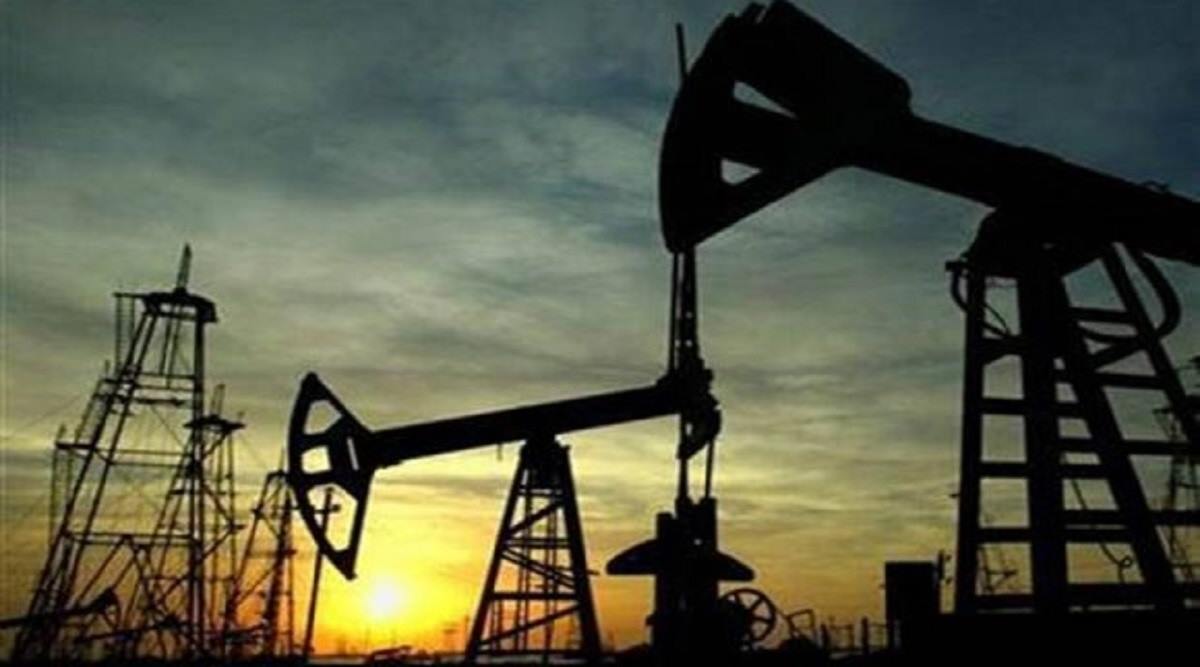[ad_1]
Brent crude fell to $97.5 per barrel on Thursday, its lowest level in four-and-a-half months, brightening the prospects of an improvement in India’s macro-economic parameters and government finances and a lessening of its external-sector vulnerabilities.
Softening of oil prices — many analysts expect the near-prospects to be benign as the likely US rate hike later this month could hit demand — could cool inflation, lend significant support to the falling rupee, thanks to lower forex outgo on import of assorted commodities and curb budget spend on explicit subsidies.
Lower crude prices could also prompt an immediate review of the recently imposed “windfall taxes” on domestic oil producers and refiners as chances of their super-normal profits have reduced, analysts said. While RIL shares gained nearly 1% to close the session at 2,396.95 on the BSE, the stock of ONGC rallied as much as 6.5% in intra-day trade, before settling at127.15, up 2.2%.
Meanwhile, the rupee lost another 24 paise on Thursday to hit yet another record-low of 79.88 against the greenback, amid expectations of aggressive rate hikes by the Federal Reserve, following the forty-year high US inflation print.
Record FPI outflows from the equity market and a stronger dollar stoked further weakness in the local currency.
As the rupee is just 12 paise away from the never-seen 80 per dollar mark, one view is that any further fall in Chinese currency and the euro can drive the Indian currency towards 80.5.
Brent crude price has eased by nearly $15-20 per barrel in the last few weeks. The path that they take in the coming few weeks remains to be seen and it is too early to say that the fall will continue,” Sourav Mitra, director–energy at CRISIL, said.
CLSA said in a report on Wednesday that the previous two weeks had seen a massive crash in the refining spreads of diesel, gasoline and aviation fuel for Indian refiners coinciding with a cool-off in crude prices from the peaks seen in June. “This questions the need for the continuation of the windfall tax imposed about two weeks back,” it said.
India’s retail inflation remained above the upper band of the central bank’s medium-term target (2-6%) for a sixth straight month in June,
On February 25, Brent crude futures traded at $97.93, higher than Thursday price. Since then, prices remained upwards of $100 a barrel, barring a couple of aberrations, putting pressure on global economies, including India which imports around 85% of its crude requirements. India, as the third-largest oil consumer of the world, imported 212 million tonne (MT) crude oil in 2021-22 for $120 billion.
Citi Group had earlier in the month said Brent might fall to $65 by the end of the current year and $45 by 2023-end. JP Morgan projects the price to hover around $104 a barrel in the remaining period of the current year, but says it may fall a little to $98/bbl next year.
Crisil’s director-energy Saurav Mitra recently told FE that the fall in the benchmark Brent price will have a significant positive impact on India and other importing nations, including in terms of a reduction of overall inflationary pressure on these economies. “No doubt, the prices will tend towards moderation from their present levels. However, we expect a significant fall only in the medium-term. The price is forecast to reach $80-82 per barrel by 2024, and moderate to $63-68 starting 2026,” he said.
The government on July 1 slapped export duties on petrol and ATF (Rs 6 per litre) and diesel (Rs 13/litre) and imposed a windfall tax on domestic crude production at Rs 23,250 per tonne.
Meanwhile, according to S&P Global Commodity Insights, India’s demand for oil products rose 0.7 million barrels per day in June, an increase of 16.3% year-on-year.
The dollar index, which tracks the greenback against a basket of currencies, rose to its highest level since June 2002. “Post US CPI, odds of a 100 basis points (bps) rate hike has increased significantly. Fed is not just hiking; they are increasing the pace of hikes in every meeting. At the same time, US yield curve has become inverted. An inverted yield curve hints at dramatic growth slowdown and even recession,” noted Anindya Banerjee, VP, Currency & Interest Rate Derivatives at Kotak Securities.
Primarily driven by an increase in the trade deficit, India’s current account deficit stood at 1.2% of GDP in 2021-22. A sudden and sharp surge in gold imports amid wedding season (as many weddings were postponed to 2022 from 2021 due to pandemic-induced restrictions) is also exerting pressure on the CAD. The deficit will deteriorate in 2022-23 on account of costlier imports and tepid exports on the merchandise account, if recession concerns in the west do not lead to a sustained and meaningful reduction in the prices of food and energy commodities, the finance ministry said on Thursday, even as it pinned hopes of the potential of robust services exports to moderate the CAD.
[ad_2]
Image and article originally from www.financialexpress.com. Read the original article here.

